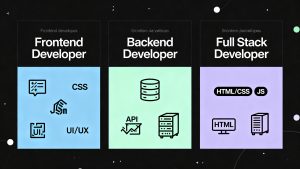AI Agents Become Active Testing Partners
Artificial intelligence is rapidly moving from a supportive assistant to a strategic testing partner. Modern AI agents can now prioritize critical test cases, diagnose failures, and recommend fixes based on patterns detected during automated runs. Decision-making is shifting from the engineer to the algorithm, empowering teams to focus on higher-level quality oversight.
Real-World Use: AI-Managing Test Suites
Today’s emerging QA landscape features AI systems that analyze code updates, select relevant tests, provision environments, run suites, and classify errors without human intervention. Engineers now supervise these intelligent platforms, elevating their roles from testers to effective overseers of smart automation.
Shift-Right Testing Powered by AI Analysis
Testing no longer ends at release. With AI-driven shift-right strategies, QA continuously monitors production data, derives new tests from real user activity, and adapts quality checks to match live usage. This approach reduces customer-reported defects and enhances the alignment between product features and actual adoption.
Democratization of Testing Across Teams
Advances in low-code, no-code, and AI-powered testing now enable business analysts, managers, and non-technical contributors to write and run tests. QA becomes a facilitator for quality, supporting contributions from all areas of the organization while safeguarding application integrity.
Evolving Role of QA Engineers
The modern QA professional is an automation expert, AI-literate, and proficient with DevOps. Testers now collaborate with development, operations, and business teams, building bridges across the software lifecycle and moving far beyond manual testing responsibilities.
Deep Integration With DevOps and SRE
Quality is being embedded directly into code pipelines. Leading teams implement QA gates, automate canary releases with built-in monitoring, and use chaos testing to strengthen resilience. QA becomes synonymous with product culture, not just a separate department.
End-to-End Automation Platforms Emerge
Growing dissatisfaction with fragmented tooling is fueling adoption of comprehensive QA platforms. In 2025, unified solutions cover everything from UI and API testing to performance, accessibility, and security, offering smarter analytics for actionable test insights.
Playwright Gains Prominence as the Framework of Choice
The rise of Playwright marks a new era for automation tools. Its speed, stability, and native cross-browser support, along with built-in tracing and API testing, are making it an industry favorite for new projects, surpassing older tools like Selenium and even Cypress in many environments.
Language Preferences Shift Among QA Professionals
JavaScript and TypeScript remain the top choice for front-end QA due to Playwright’s ecosystem, while Python is widely valued for its flexibility and AI capabilities. Java remains significant in the enterprise sector, but new projects often choose lighter, more versatile languages.
Roadmap for QA Success in 2025
A practical path to QA excellence includes baseline test metrics, integrating Playwright and API tests early, piloting AI-driven test creation, expanding to shift-right monitoring, and consolidating reports into unified dashboards. Success is measured by faster releases and incident reduction, as QA teams now demonstrate direct ROI through saved time and improved reliability.
Read more such articles from our Newsletter here.



